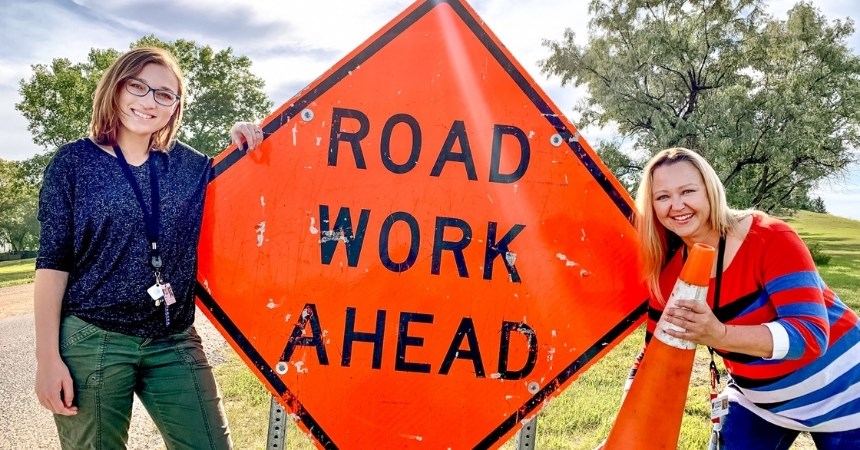Imagine driving through the middle of town during road construction season trying to navigate unexpected stop signs, orange cones, and random holes in the middle of the road to get through to the other side safely. Most of us are familiar with applying the right amount of pressure to the brake and gas pedals to get through the construction safely. For some, it's second nature and requires very little active thought.
Now imagine trying to get through that same construction zone without a brake pedal and the accelerator pressed all the way to the floor. Everything is coming at you so fast you barely have time to dodge obstacles, much less figure out how to slow down or stop the car.
That is the difference between arousal (the first example) and hyperarousal (the second example).
Many of the children at Dakota Boys and Girls Ranch live in a constant state of hyperarousal. They don't choose to live like this. Their hyperarousal is a natural response to surviving years of neglect, abuse, and trauma.
While children arrive at Dakota Boys and Girls Ranch with their own unique needs, trauma is the most common experience among them. When a child experiences trauma, the survival area of the brain (sometimes called the "reptilian brain") is the most active.
As humans, we aren't typically able to reason through a frightening situation logically until after the fact, when we have returned to a calmer state of mind. During a crisis, we can move quickly from a typical state of arousal to hypoarousal (freeze) or hyperarousal (fight or flight) to help us to survive. While we are experiencing a crisis of trauma, the part of the brain that stores memory often malfunctions and doesn't record the memory.
But, because our bodies record everything, Ranch kids may remember the feelings and sensations associated with the trauma and get stuck in hyperarousal, with no real memory of what happened. This can create hypervigilance, high startle response, difficulty with transitions, emotional variability, being easily offended, physical aggression, or trouble with being told "no."
Regardless of developmental abilities or histories of trauma, treatment always starts with meeting the kids where they are at in their reptilian brain to increase their sense of safety and control. This means no shaming and no judgment. We validate their experiences no matter how irrational they may appear. Later in treatment, we introduce skills to help them move from hyperarousal to arousal, increase the size of their window of tolerance and restructure thoughts and beliefs to more adaptive ways of seeing themselves and the world around them. Throughout treatment, Ranch staff serve as the "brake pedal" until the child is able to learn and implement the skills they need to regulate themselves.
This may sound complicated, however, there are easy ways to increase a child's window of tolerance and help them regulate their emotions and behaviors:
1. Safety – Just listen. Don't force kids to talk about their experiences. Give them space to express themselves by allowing them to choose activities through which the family interacts.
2. Stabilization – Calmly label the emotions you are seeing in the child. Allow for voice and choice by providing age-appropriate options to give children a sense of control and ownership.
3. Structure – Provide a daily routine that is both flexible and predictable. Work to keep messages consistent between caregivers.
Monica Olson, LPC, and Taylor Keller, LAPC, are both clinical therapists at Dakota Boys and Girls Ranch, Minot campus.

